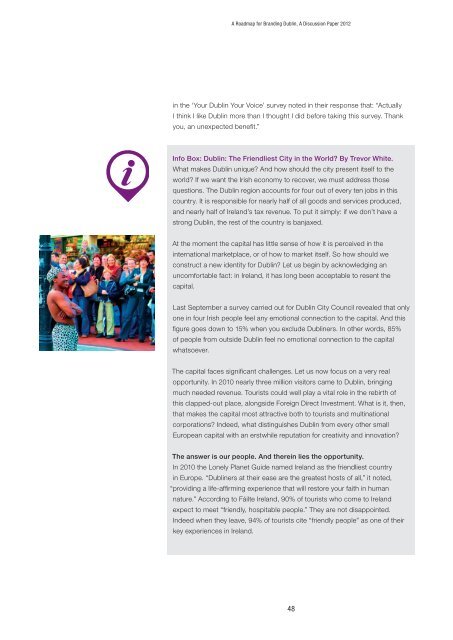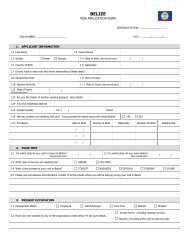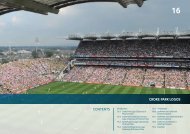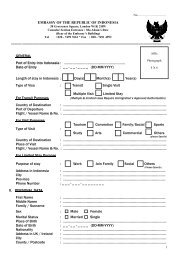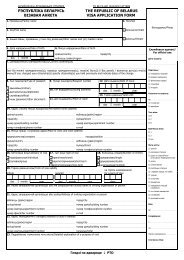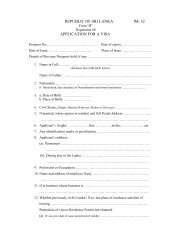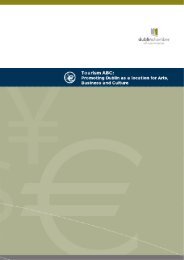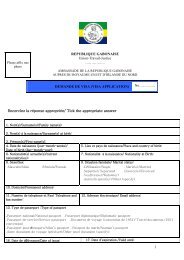CDA – A Roadmap for Branding Dublin 2012 – A Discussion Paper
CDA – A Roadmap for Branding Dublin 2012 – A Discussion Paper
CDA – A Roadmap for Branding Dublin 2012 – A Discussion Paper
You also want an ePaper? Increase the reach of your titles
YUMPU automatically turns print PDFs into web optimized ePapers that Google loves.
A <strong>Roadmap</strong> <strong>for</strong> <strong>Branding</strong> <strong>Dublin</strong>, A <strong>Discussion</strong> <strong>Paper</strong> <strong>2012</strong>in the ‘Your <strong>Dublin</strong> Your Voice’ survey noted in their response that: “ActuallyI think I like <strong>Dublin</strong> more than I thought I did be<strong>for</strong>e taking this survey. Thankyou, an unexpected benefi t.”Info Box: <strong>Dublin</strong>: The Friendliest City in the World? By Trevor White.What makes <strong>Dublin</strong> unique? And how should the city present itself to theworld? If we want the Irish economy to recover, we must address thosequestions. The <strong>Dublin</strong> region accounts <strong>for</strong> four out of every ten jobs in thiscountry. It is responsible <strong>for</strong> nearly half of all goods and services produced,and nearly half of Ireland’s tax revenue. To put it simply: if we don’t have astrong <strong>Dublin</strong>, the rest of the country is banjaxed.At the moment the capital has little sense of how it is perceived in theinternational marketplace, or of how to market itself. So how should weconstruct a new identity <strong>for</strong> <strong>Dublin</strong>? Let us begin by acknowledging anuncom<strong>for</strong>table fact: in Ireland, it has long been acceptable to resent thecapital.Last September a survey carried out <strong>for</strong> <strong>Dublin</strong> City Council revealed that onlyone in four Irish people feel any emotional connection to the capital. And thisfigure goes down to 15% when you exclude <strong>Dublin</strong>ers. In other words, 85%of people from outside <strong>Dublin</strong> feel no emotional connection to the capitalwhatsoever.The capital faces signifi cant challenges. Let us now focus on a very realopportunity. In 2010 nearly three million visitors came to <strong>Dublin</strong>, bringingmuch needed revenue. Tourists could well play a vital role in the rebirth ofthis clapped-out place, alongside Foreign Direct Investment. What is it, then,that makes the capital most attractive both to tourists and multinationalcorporations? Indeed, what distinguishes <strong>Dublin</strong> from every other smallEuropean capital with an erstwhile reputation <strong>for</strong> creativity and innovation?The answer is our people. And therein lies the opportunity.In 2010 the Lonely Planet Guide named Ireland as the friendliest countryin Europe. “<strong>Dublin</strong>ers at their ease are the greatest hosts of all,” it noted,“providing a life-affi rming experience that will restore your faith in humannature.” According to Fáilte Ireland, 90% of tourists who come to Irelandexpect to meet “friendly, hospitable people.” They are not disappointed.Indeed when they leave, 94% of tourists cite “friendly people” as one of theirkey experiences in Ireland.48


